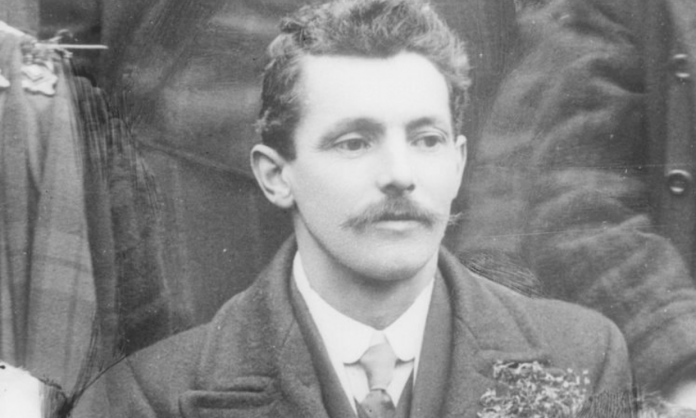by James Reddiough
He was born in New Ross on the 20 March, 1874, and raised in Carlow, when his father died in 1903 the family moved to Phibsborough, Dublin, and he was to spend the rest of his life there as an insurance agent and dedicated lifelong republican. Henry O’Hanrahan played a leading role in the fight for freedom and the battle for the republic and he died in the Mater Hospital in Dublin on the 20 September, 1927, aged 53, and is buried in Glasnevin, with many others who were his comrades in the battle for independence.
Henry was an early follower of Arthur Griffith’s Sinn Féin and later a member of the IRB and the Irish Volunteers, and he took part in the 1916 Rising serving with his better known brother Michael, who served as second-in-command at Jacob’s Mills and who was executed for his part in the rebellion whilst Henry’s death sentence was commuted to penal servitude for Life, but Henry, like countless others, including Michael Collins, was released in the General Amnesty of 1917. He was a businessman who ran a business with his two sisters at 384 North Circular Road.
Henry worked as an agent for Michael Collins and it was through Collins that he met Eamon Broy, a vital cog in the wheel of the intelligence war for The Big Fellow. Henry was also heavily involved in the political scene, acting as election agent for the Sinn Féin victories of the 1917 By-Elections as well as the historic landslide victory in the General Election of 1918, when Sinn Féin won 73 seats and signalled the demise of the Irish Parliamentary Party under John Dillon. Henry would leave politics after this and become more involved in the intelligence war and the physical force movement and he fought on until his capture and internment in January 1920.
Firstly he was taken from his home on the North Circular Road to Mountjoy and from there, along with four other members of the Dublin Brigade, he was deported by ship to Wormwood Scrubs where he went on hunger strike. He was released in January 1922 and campaigned against the treaty. Readers of Ireland’s Eye may like to know that he spoke at a concert in Castlepollard, Co. Westmeath in April 1922 representing the anti-treaty faction of Sinn Féin called Cumann na Poblachta.
He took the republican side in the Civil War and fought with the Hamman Hotel Garrison in the Dublin fighting of early July 1922 and was captured and interned. He remained a dedicated republican all the rest of his life until his death in September 1927. He never fully recovered from hardships endured during the struggle for independence and had to undergo surgery in 1927, from which he died in the Mater Hospital. His funeral was from St Joseph’s Church, Berkeley Road, Dublin and his remains were laid to rest in Glasnevin Cemetery not far from Michael Collins. There were many religious figures and men and women from the independence movement present including Éamon de Valera, Gerry Boland, Sean Lemass and Frank Aiken, his former Chief-of-Staff in the anti-treaty IRA.








